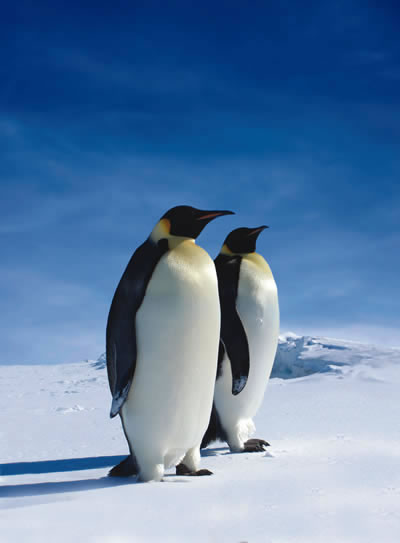Researchers have found fossilized remains of ancient penguins in Peru. Researchers have found that they used to be 5-feet tall and their ‘tuxedo’ may have been reddish-brown and gray.
The first thing the graduate student saw was a set of foot bones at the surface of an excavation site in Peru. He turned over a rock and noticed a pattern of scales. This hinted that the large fossil might still have soft tissue intact — a rarity.
The team of paleontologists nicknamed the specimen “Pedro” and took it to the lab for further examination.
It turned out to be the remains of a 5-foot, 120-pound penguin — one of the largest ancient penguins ever found, according to an online report this week in the journal Science.
Inkayaku paracasensis, as University of Texas paleontologist Julia Clarke and her team officially named the species, lived about 36 million years ago. One of the oldest ancient penguins found in Peru, it would have been about a third taller and twice as heavy as the emperor penguin, the largest penguin living today.
Pedro is the most complete ancient penguin fossil yet reported — and he still has some of his feathers.
“This is an extraordinary fossil find,” said Paul Scofield, curator of vertebrate zoology at the Canterbury Museum in Christchurch, New Zealand. Scofield studies ancient penguins but was not involved in Pedro’s discovery.
Among other surprises, it appears that Inkayaku didn’t wear the classic penguin “tuxedo.” Pedro’s “suit” may have been reddish-brown and gray, the team reported.
They figured that out using a cutting-edge color-mapping technique that examined the shape of melanosomes — the pigment-containing organelles inside cells — in the fossilized feathers. Then they compared them to a database of melanosomes from living penguins and other bird species.
While the shape and pattern of Pedro’s flipper feathers resembled those of modern penguins, the melanosomes were quite different.
Pedro’s melanosomes looked more like the organelles that contain gray and reddish-brown pigment in other kinds of birds, according to the report.
Those of modern penguins are larger, and they cluster into grape-like formations that could alter the feathers’ microstructure. Clark said that the large melanosomes of the modern penguins might produce stronger feathers well-suited for swimming.
Penguin evolution “is more complicated than we imagined,” said Scofield, who is still looking for the “missing link” that led to the modern birds. “There’s huge diversity.”
 Thfire.com Everyday news that matters
Thfire.com Everyday news that matters 
